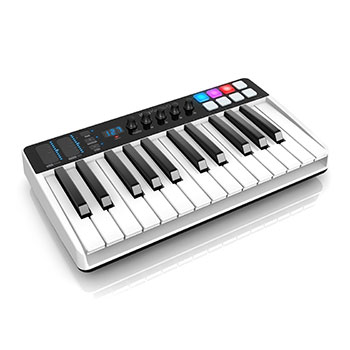

#Midi work sampletank 3 how to#
Learn all about this killer workstation and How to Use it in Your Productions to its fullest extent.Įli begins with a Detailed Introduction, giving you a birds-eye view of the workstation and what to expect in the following videos. DAW guru Eli Krantzberg leads your SampleTank 3 expedition, leaving no areas uncharted.
#Midi work sampletank 3 software#
IK Multimedia has done it again! Sporting a redesigned interface with over 33GB of sounds, this Software Sampler Workstation is a world of its own. If you don't remember anything from any of the other videos, use this video as a recap of the main points you'll need to get up and running with SampleTank 3 quickly and easily.

Learn how to record MIDI CC automation, draw in macro automation, and reassign the preset macro mappings for external control. Learn how to assign hardware knobs and sliders on a MIDI controller to modulate specific parameters in the SampleTank 3 interface. See and hear how Envelope 2 is used to modulate the pitch of a note over time.ĭiscover how the controls in this section are used to create and control pitch transitions between notes. See and hear how Envelope 2 is used to modulate the shape of the filter over the duration of a note. Learn how the Envelope 1 parameters are used to influence and shape the volume of a note during the various stages it goes through from start to finish. Learn how to assign velocity to influence the amplitude of a sound, as well as the pitch, filter resonance, and filter cutoff.ĭiscover ways to modulate pitch, level, filter cutoff, and amplitude, using preset recurring cyclical waveform shapes called LFOs. Hear how it is used for traditional high and low pass filtering, as well as colourful effects including phase and formant filtering and over driving the input stage. See how the signal path works internally within SampleTank 3, as well as how to route the signal from the different parts to separate outputs so they arrive as discreet audio streams within the host DAW.Įxplore how the parameters here are used to create layers and splits based on either MIDI channel, note ranges, or velocity ranges and how to use the zone button to edit parameters only in specific note ranges.Įxplore the parameters in this row and hear how they are used to affect the pitch and speed at which samples are played back at, as well as how to affect timbre and tuning.ĭiscover SampleTank 3's powerful filter section. See how the five insert effects are used on a per part basis, how to save and recall custom presets, and how to lock effects in place when auditioning different sounds.Įxplore the effects send routing in SampleTank 3, and see how the effects returns are used to save on CPU resources by having multiple parts share the same time based plug-ins like delay and reverb. Switch between Songs or the various Multis within Songs using either the mouse or program change messages.Įxplore the Macro and FX tabs and see how basic per part mixing functions and insert plug-ins are controlled and edited without having to switch to the Mix tab.Įxplore the basic layout and functions of the Mix page and channel strip components. Multis are stored in Songs, and Songs are saved in Set Lists. See how this feature is designed to be used for live performances with Sample tank 3. See how specific individual trigger notes in the loop instruments are assigned to the Global Play button, and then stored within a Multi.ĭiscover how MIDI patterns are used in conjunction with loaded SampleTank 3 instruments, and how to edit their key, intensity, and feel. Discover how to use key switch notes with the multi articulation instruments and trigger notes with the loop instruments.
#Midi work sampletank 3 pro#
See the three different types of SampleTank instruments in action as a custom multi is created and used in Logic Pro X. See how to save, search, create, and manage your own custom multi setups. Multis are collections of up to sixteen instruments. Learn how to import aiff or wav samples and create your own custom SampleTank 3 instruments. See how to use the Import function to convert old IK Multimedia instruments and bring them in to SampleTank 3. Learn how to load instruments, and use the info, save, save as, and rename functions. Learn how to set the data pathway, adjust audio and MIDI settings, and see how the latch and sync modes work. An overview of the SampleTank 3 interface that will be explored throughout these videos, including the Play, Mix, and Edit tabs, as well as the Macro/FX tab and global controls.


 0 kommentar(er)
0 kommentar(er)
